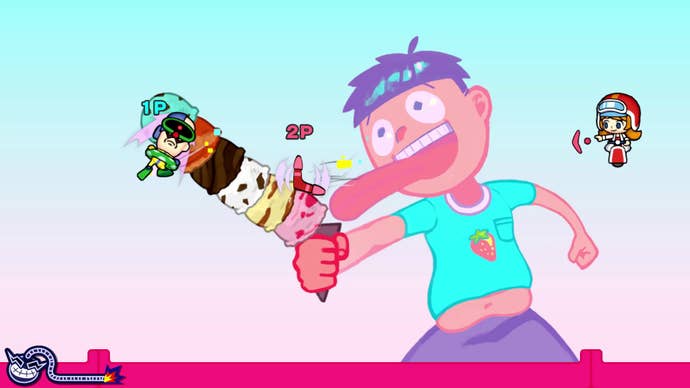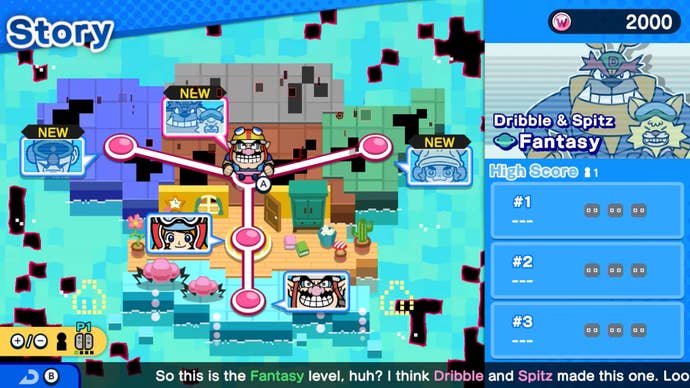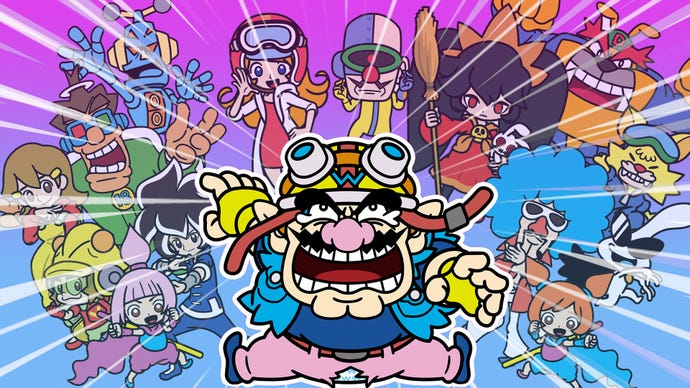WarioWare: Get It Together! review: fantastic mini-game mayhem with a multiplayer twist
The latest WarioWare offers up a new way of playing and a moreish story mode, but the real value of the package is as a multiplayer party game.
Let me get the important bit out of the way right at the start. If you, like me, were concerned when you saw that this new WarioWare title involves controlling characters rather than just abstract concepts - don’t worry. The manner of control may have slightly changed, but the series’ abstrawackiness is completely intact - and it’s still brilliant.
In fact, the Switch’s first WarioWare title is closer to its beloved predecessors than I ever expected. The concept remains simple: you’re presented with a suite of ultra-short mini-games (micro-games, if you will) that last a couple of seconds each. The game screams a command at you (for instance “plug!” or “hit it”) and your job is to perform that action quickly before the time expires. Win or lose, it’s then on to the next micro-game. The more tasks you successfully complete in quick succession, the faster each game becomes - and this continues until you run out of lives, or until you beat the stage’s boss game if you’re over in story mode.
All this will be familiar to players of the other classic WarioWare titles. Where Get It Together differs is in how you complete these games. Now, you’ll be cast as one of an eclectic cast of characters who actually move around the micro-game and can interact with it. Each character has unique abilities that mean the way they might solve each puzzle is relatively unique, too.
Let me give you an example. One game is based on the Game Boy classic Super Mario Land - and to complete it all you have to do is hit a Mario coin box. In older WarioWare games you’d actually control Mario; but here, he’s off to the side, cheering you on. It’s up to your character to hit the box. Some can walk over and jump into it. Some can fly into and barge it to activate it. Some can shoot it from a distance, and so on.
In most modes you won’t be playing as just one of the game’s cast, but a ‘crew’ of several - and so there’s an element of chance as to which character gets which game. You’ll have to think on your feet to identify in what way the character you’re using at that moment can solve the micro-game you're in. It’s an interesting wrinkle to the WarioWare formula, and I like it a lot.

The main reason this character-based control method seems to exist is to allow multiplayer, however. This is where ‘Get It Together’ comes from; you can play cooperatively with another player, where there’ll be two characters on screen. A couple of characters actually come as pairs, too, where each of the duo has a slightly different twist on the same core ability. All micro-games are fine solo, but some are clearly designed to be more efficiently completed with a well-tuned co-op pairing.
It all works well. And, well, it’s WarioWare. There’s a wonderfully anything-goes level of absurdity and fun, and there’s a brilliant sensibility to the game’s art and attitude. This attitude is perhaps best conveyed throughout the story mode, which is surprisingly peppered with short-but-sweet animated sequences that introduce each of the characters. This isn’t real anime stuff - it’s very simple - but it sets the tone perfectly. There’s cameos from Nintendo’s other great minigame series, Rhythm Heaven.
When it’s firing on all cylinders, it’s a delight to play, and despite not actually being a rhythm game, there’s a toe-tapping quality to hopping from one game to the next.
That story mode won’t last you more than a few hours, though. Once you finish it, you’ll discover that you’ve probably only seen around half of the micro-games of each category - and you can discover the rest through story replays or alternative modes.
If you don’t love the core mini-game action, most of the extra modes are unlikely to convince you. If you do enjoy the games, however, there’s enough here to keep you well engaged. For a start, you can upgrade characters and unlock customization options by spending coins earned for playing the other modes. You can earn coins also by cashing in Missions, which are basically achievements.

The ‘Wario Cup’ is an online challenge mode where you work to set the highest score you can on a very specific challenge - say a certain set of games as a specific character. Those challenges will rotate over time. You can use the Play-o-Pedia to replay any micro-games you want, too. All of this is on par with or superior to the past WarioWare titles.
Finally, there’s the ‘Variety Pack’, a collection of ten longer-form mini-games designed to cement this release’s status as a go-to party game. Only one of these games is single-player and it sort of sucks - but the rest are for between 2 and 4 players, offering things like a WarioWare version of volleyball and a few modes that put you back into the core microgames but with a competitive twist.
It’s all very neat, and delightful fun, and I can’t wait to play this game in a room full of people rather than with just a couple of us. Some people are inevitably going to find the length of the single-player options a little lacking. I wish those story sequences were a little more animated, even if they’re perfectly good fun as-is. I play this game and sort of pine for Rhythm Heaven, especially in the face of all those cameos. But, y’know, these are very minor criticisms to level at a game such as this.
WarioWare: Get It Together is unabashedly Nintendo, fulfilling its mission statement to the letter with alarming precision, but also not rocking the boat very much at all. The game’s one big change - controlling a cast of characters - didn’t turn out to be that big of a deal after all. The result is a wonderfully infectious game to play alone - while it lasts - but the true value of the package will be in playing it with others.

